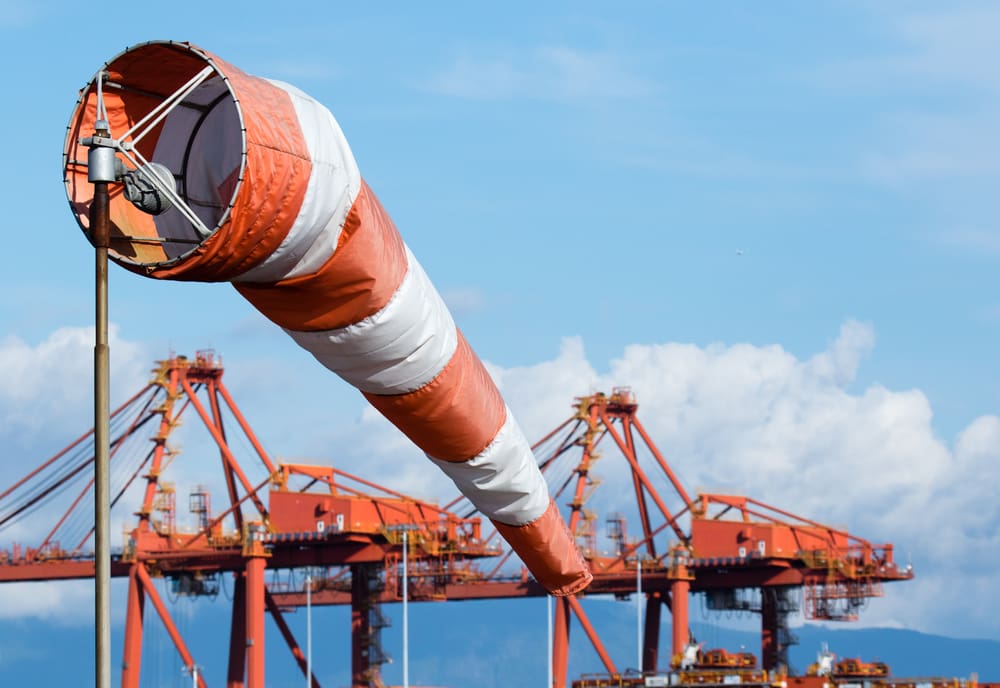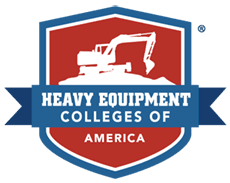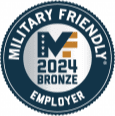Cranes are one of the most common pieces of heavy equipment used on construction sites. From tower cranes to overhead cranes, these machines help work crews across the country accomplish heavy-duty tasks that would otherwise be impossible.
Just like any other piece of heavy equipment, cranes must be used properly to keep people safe. That includes taking certain precautions when it’s windy outside or a storm is brewing. Let’s go over what it means to weathervane a crane, why it’s important, and the average wind speed guide.
Table of Contents
What Is Weathervaning for Cranes?
Have you ever seen the jib—or arm—of a crane spinning in circles during a storm? Don’t stress; believe it or not, it’s supposed to do that.
Weathervaning, also called free slewing, involves releasing the slew brake (the equivalent of a parking brake) so the crane can rotate 360 degrees in the same direction the wind is blowing. This process prevents the crane from fighting against the wind, which increases its chances of tipping over.
Since cranes can withstand up to 100 mph winds, this is typically a precautionary measure. It’s always better to be safe than sorry.
What Is the Purpose of Weathervaning for Cranes?
The purpose of weathervaning is to prevent cranes from tipping over in high wind conditions. Since the jib moves with the wind, the crane experiences minimal pressure and force. This protects the crane and its surroundings from damage and protects workers from getting injured or worse.
Weathervaning is typically used when wind speed is high or when a storm is expected to hit a certain area—particularly coastal areas. This precautionary measure keeps the crane stable until the weather conditions subside.
The Ultimate Wind Speed Guide for Mobile Crane Operation
Keep reading to learn more about how wind speed impacts crane operation, how to handle high winds, and when to stop operations for safety reasons.
How Common Are Crane Accidents?
The odds of a crane tipping over are low. When they do tip over, it’s usually because of preventable causes rather than factors like weather conditions. Common causes of crane accidents include improper use, incorrect assembly, and falling debris.
Is It Safe to Use Construction Cranes in Bad Weather?
We strongly discourage operating a crane in bad weather. Doing so increases the risk of an accident occurring, which unnecessarily puts workers and any bystanders in harm’s way. Plus, the crane and other equipment on the job site could end up sustaining damage. Wait until the weather passes to begin or resume operations.
Check weather patterns daily to know when you might need to postpone a lift. A general rule of thumb is that if you’re uncertain, don’t risk it. The safety of your workers and the value of your equipment isn’t worth it.
Program Length
3 Weeks
What Is the Wind Speed Restriction for Crane Operation?
Certain restrictions are placed on crane usage when wind speeds exceed a certain threshold or other hazardous conditions are at play. These restrictions vary based on factors such as crane type, size, and design, project type, and local regulations.
Crane manufacturers also assign wind speed ratings to each piece of equipment they produce. These ratings specify the maximum speed at which a crane can operate safely without becoming unstable. The average crane’s wind speed threshold is anywhere from 20 to 30 mph.

How Do You Weathervane a Crane?
Weathervaning a crane is fairly simple. All you have to do is remove the slew brake when your area is anticipating high winds or a storm. Once the slew brake is deactivated, the jib will spin the direction the wind is blowing to decrease the pressure put on the crane.
Weathervaning or Free-Slewing Cranes?
We said it once, but we’ll say it again: don’t be concerned if you see the arm of a crane spinning in circles when it’s windy or storming outside. They’re designed to react this way. This movement is a sign that the crane operator is following proper safety procedures to keep workers and bystanders safe.
If the operator didn’t weathervane the crane, it could tip over due to high wind speeds and destroy everything in its wake.
The Importance of Crane Safety
Did you know the average crane weighs upwards of 60,000 pounds? Some even weigh over a ton. When you’re dealing with that much weight, correct operation is essential for equipment longevity and worker safety.
Crane operation comes with some risks. Thankfully, many of these risks can be mitigated or avoided altogether when the right safety precautions are implemented. You and your crew should have a detailed crane safety plan in place so you know what to do when certain risks arise. Doing so will help you and your team to:
- Prevent overloading
- Keep debris from falling
- Eliminate electrical hazards
- Protect workers and any bystanders
- Enhance efficiency
- Minimize slowdowns
- Minimize risk and liability
Crane safety is a life-or-death matter, so take it seriously.
Become a Certified Crane Operator at HEC
Are you ready to become a certified crane operator? Heavy Equipment Colleges of America will help you achieve this goal. Our tower crane operator training programs combine expert classroom instruction with practical hands-on training, equipping you for the career you want.
Don’t worry about putting your life on hold; our accelerated training programs can be completed in as little as three weeks. What are you waiting for? Start the enrollment process today.





